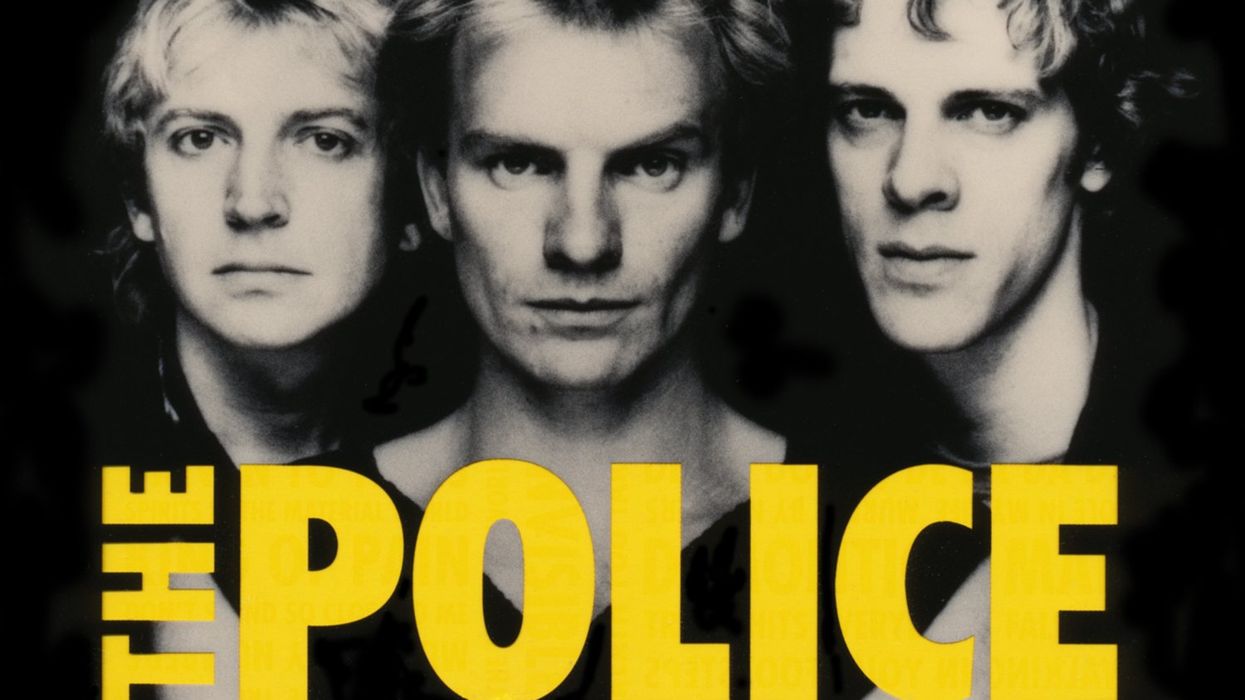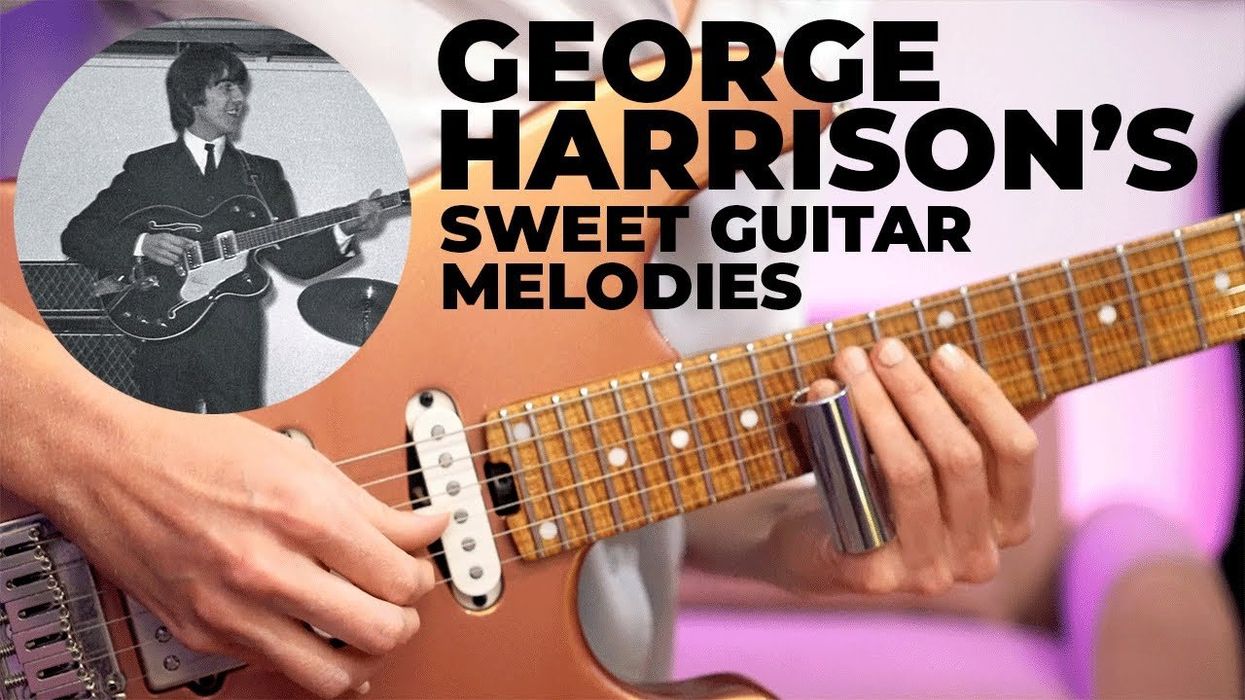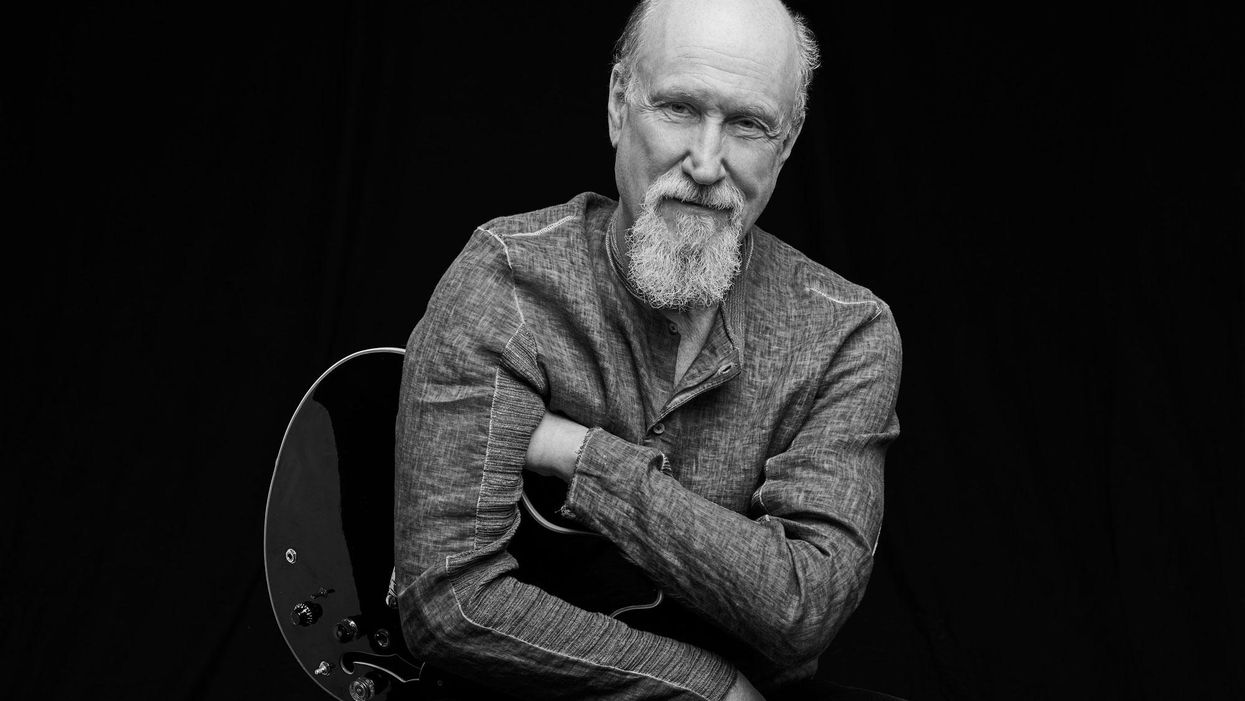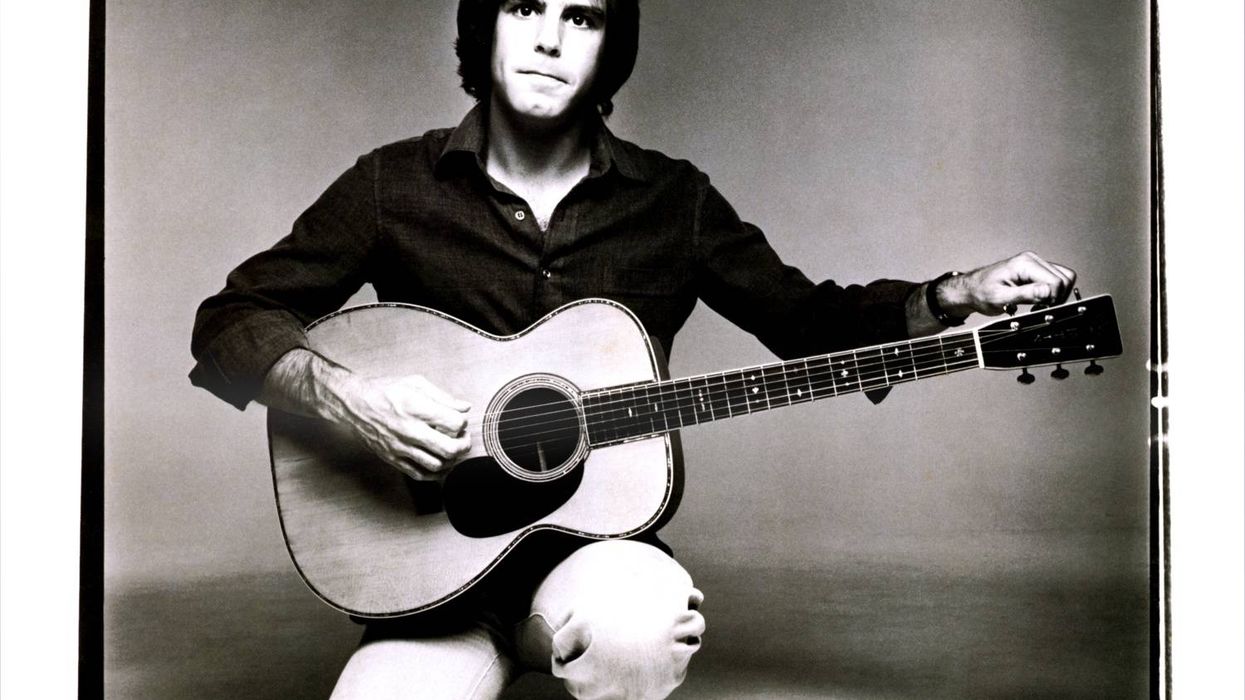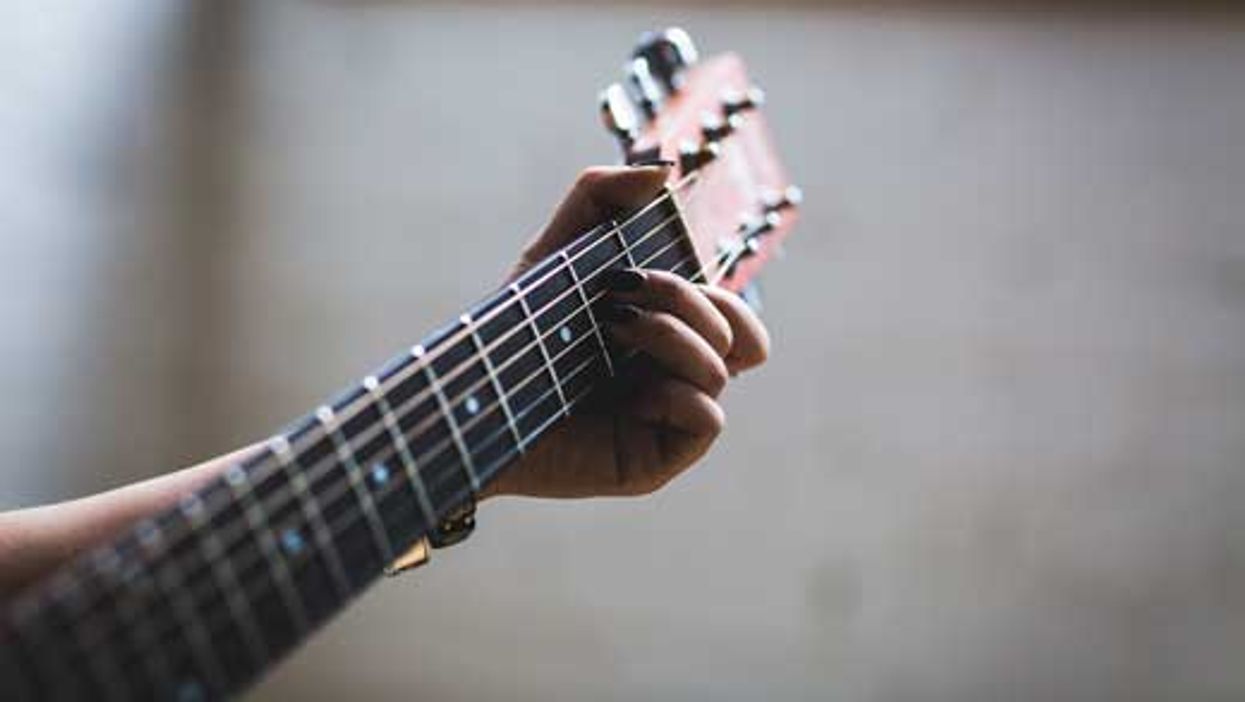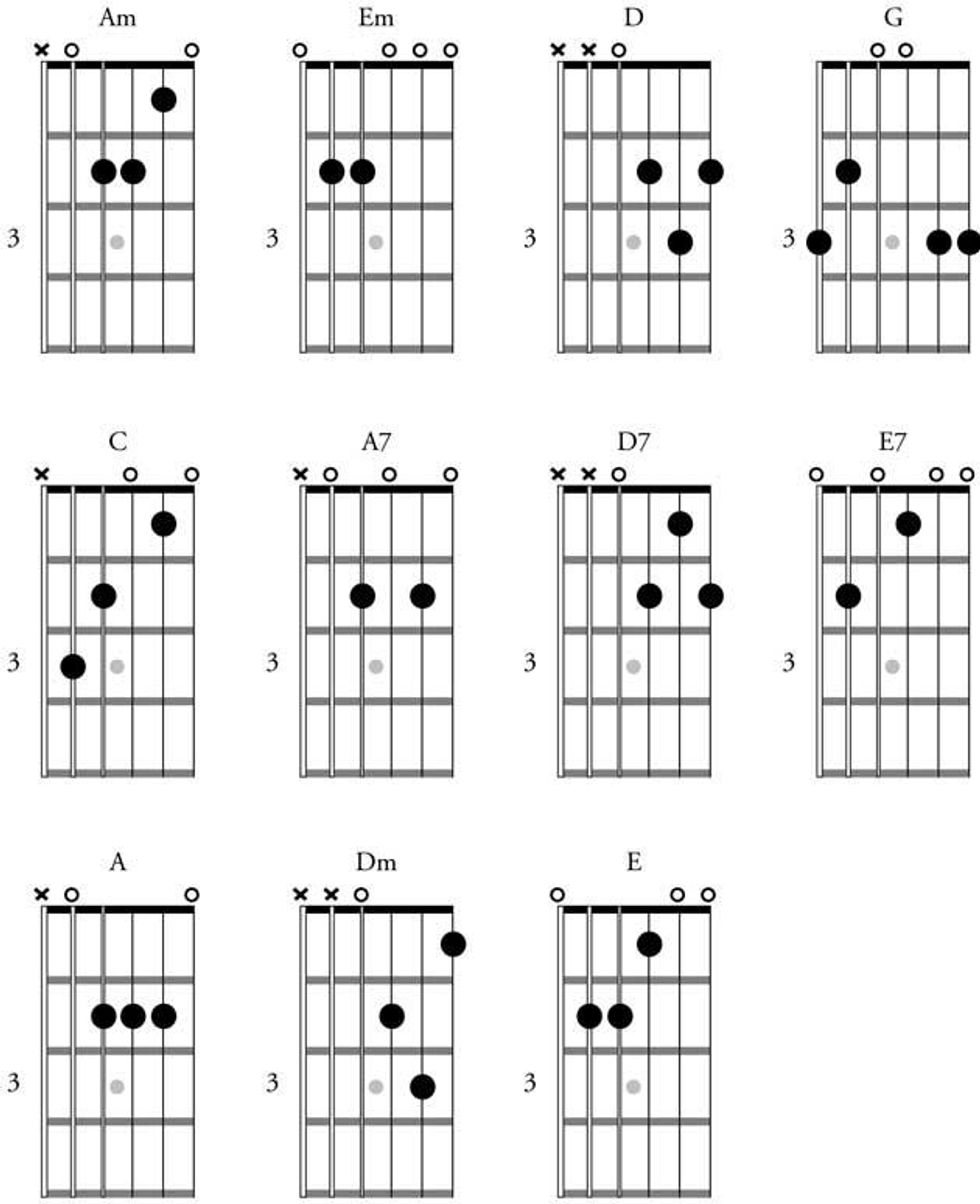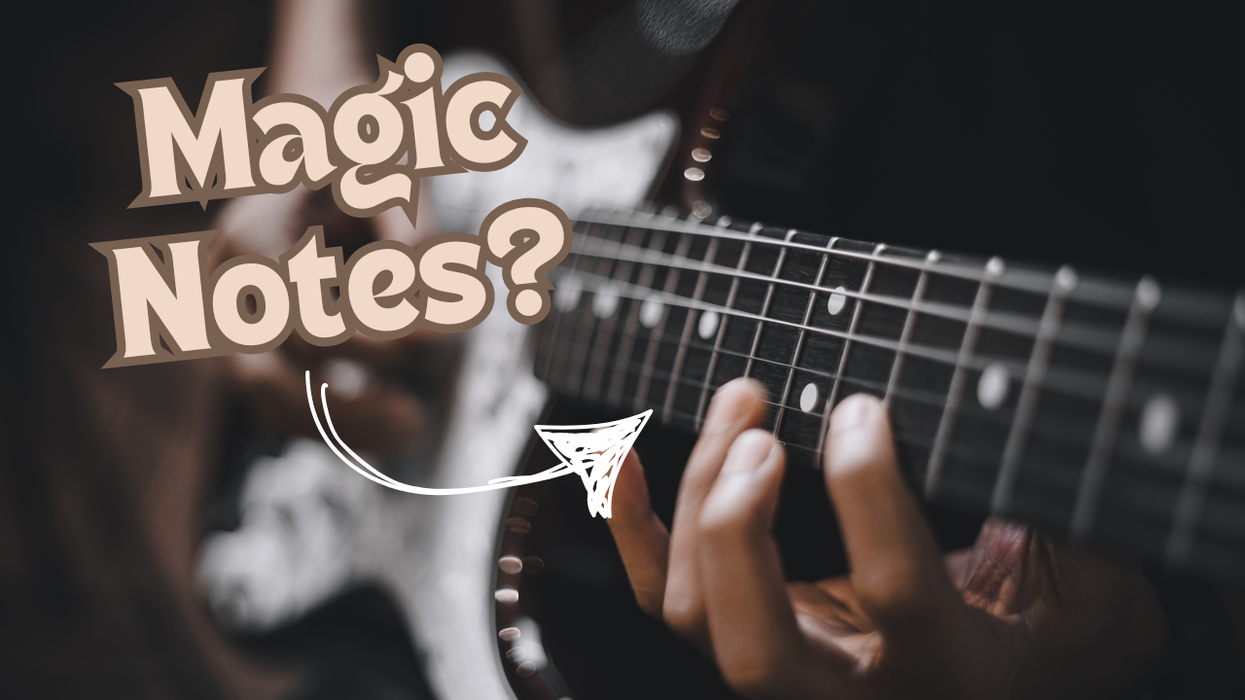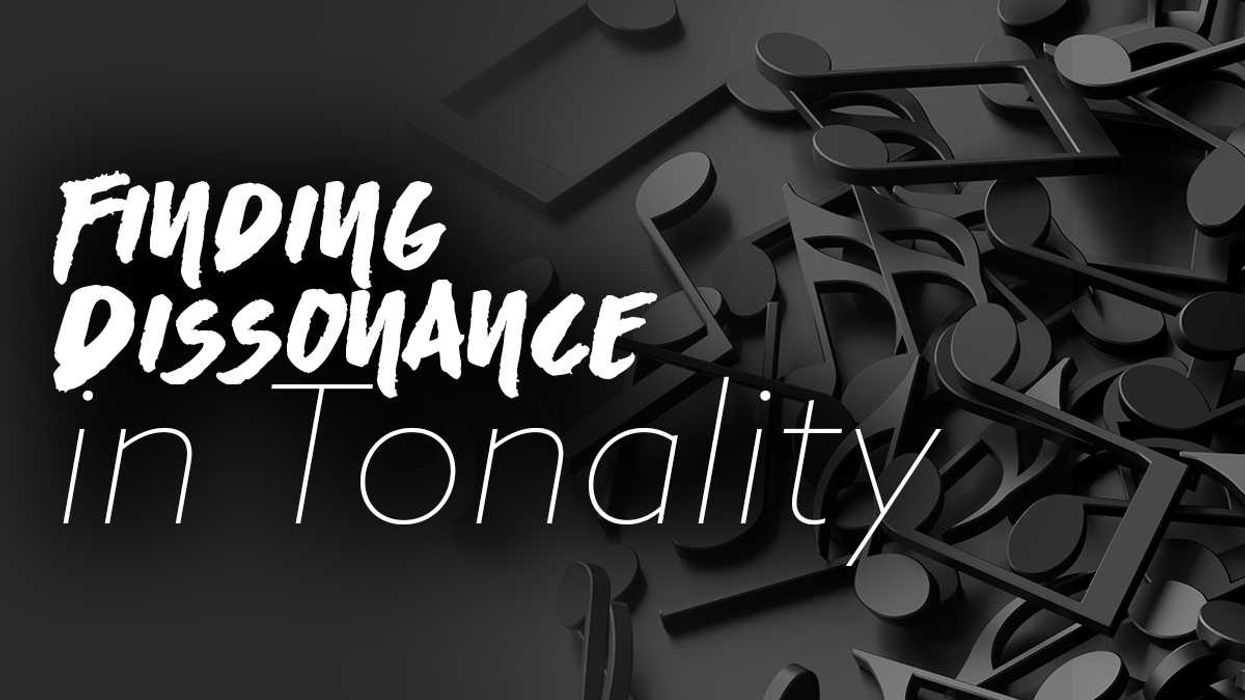Theory: Intermediate
Lesson Overview:
• Learn how to use extreme bends to emulate Indian melodies and phrasing.
• Discover how to free yourself rhythmically.
• Improve your single-string technique. Click here to download a printable PDF of this lesson's notation.
Our goal with this lesson is to capture some of the melodic grace that master sitar players exhibit. It’s a tall order and will push us to the limits of our technique and open up new avenues to explore. You’ll notice that I used a conventional, clean electric guitar tone the recording. Our approach here is a musical one, rather than a timbral one. This is all about how and what you play, rather than an investigation into the sitar’s droning and buzzy sounds (though that’s a fun and interesting path, as well).
A technical note about bringing this music to the guitar: Bends are often very large in sitar playing—much greater than most of us are accustomed to. The simplest and most appropriate way to emulate sitar bends on our guitar is to execute all of these examples on our 3rd string, which happens to be very close in pitch to where the sitar’s 1st string is tuned. Why does that matter? The physics of our 3rd string is such that it enables the largest bends, and it’s also tuned very close to the sitar’s principal melodic string. In other words, the bulk of a sitarist’s melodic playing is done on the 1st string. When you look at a sitar, you’ll see that the 1st string is located approximately in the center of the neck, and this allows plenty of room for the string to be bent by pulling it toward the floor.
Another important note: Except for the last example, all the phrases in this lesson are in the key of D. The open 1st string of the sitar is tuned to the 4th degree of the scale, and we maintain that relationship here by using our 3rd string (G) for the melodies and bends.
Also, I tuned down a half-step to record the audio for two reasons: First, to make large bends possible, and second, to be able to play in the common Indian classical key of C# (though D is often used, as well).
The audio examples are played above a drone instrument called the tampura, which plays the roots and 5 or sometimes root and 4 of the key. YouTube abounds with various drones from traditional Indian styles, so there’s plenty of options out there to jam with. Of course, work these ideas and techniques into your own music. Experiment with them over single chords or even over progressions, especially in modal settings. Perhaps it might inspire you to begin a deep study of this wondrous music.
Ex. 1 is a line similar to the melody from Ravi Shankar’s piece, “Pancham Se Gara.” It was Shankar who can be credited for making the sitar famous in the West, particularly from his association with George Harrison and appearing on the bill at huge festivals in the 1960s. This example is interesting because it uses two different 4th degrees (the natural and #4), so there’s a hint of both major and Lydian, as we’d label it in the West. (For familiarity’s sake, the music theory terms and labels used in this article are of the Western variety; as you’d expect, the Indian classical system has a complete nomenclature and music theory of its own.)
Click here for Ex. 1
As with the first example, Ex. 2 is also inspired by “Pancham Se Gara.” Again, Shankar uses two different 4th degrees, but this example also shows two different 7th degrees, so there’s a hint of major, Lydian, and Mixolydian—the latter due to the b7. This is a perfect spot to consider fingering options for running up the neck. Shankar would have likely fretted a figure like this using three fingers.
Click here for Ex. 2
The indomitable Vilayat Khan is the inspiration for Ex. 3, which is inspired by Raga Yaman. The bends are of a reasonable size and are used for beautiful musical expression, but also to create a practical way to finger this scalar passage. This particular example would work well in any Lydian-type of situation.
Click here for Ex. 3
Ex. 4 is another example showing Vilayat Khan’s sophisticated way of playing what is otherwise a relatively straightforward scalar passage. As with the Shankar examples, we’re again hearing both lowered and natural 7th degrees.
Click here for Ex. 4
Another must-know sitarist is Nikhil Banerjee—a masterful contemporary of Ravi Shankar and Vilayat Khan. The giant bends in Ex. 5 will test the limits of you and your instrument! On guitar, these are huge and just plain gnarly. If you have trouble executing them, a workaround could be to switch to a lighter gauge on the 3rd string. Alternatively, you could modify the fretted notes—they’re important, but the goal of the resulting pitch is even more so. Raga Desh is the source for this material. Desh has elements of major and Mixolydian, meaning both the natural and b7 are present—their specific use is dependent on the setting.
Click here for Ex. 5
If your fingers are getting sore or you’ve broken too many strings trying to play the last example, consider this workaround: slide guitar! Slide guitar is actually a bona fide instrument in Indian classical music, so you’ll want to check out some of the brilliant musicians who play various modified guitars. The same passage from Ex. 5 is played in Ex. 6 with a slide.
Click here for Ex. 6
The first section of a raga is called the alap, an exploratory exposition of details of the raga itself, and is played in free time. Ex. 7, inspired by Raga Bageshri, is based on living legend Shahid Parvez Khan, an all-around great musician, but certainly a master of the art of bending. In fact, his style is heavily bend-oriented due to the strong vocal influence in his tradition. Again, if the bends are too large, consider slide guitar or use a lighter 3rd string. Notice that the drone here is root and 4. The scale that forms the basis for this raga has no 5 (D–E–F–G–B–C) and is similar to our Dorian mode.
Click here for Ex. 7
Here’s a spacious melody (Ex. 8) inspired by Shahid Parvez Khan. The first few measures reveal a basic theme; ensuing repetitions of this theme are fleshed out with improvised runs. If you want to try it in a Western setting, it works well over Dm or G7.






